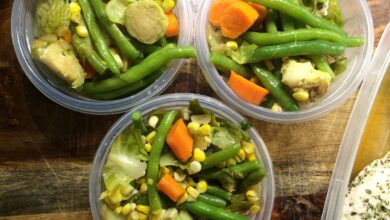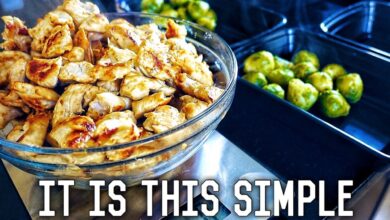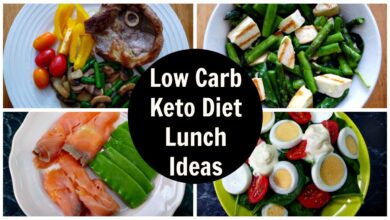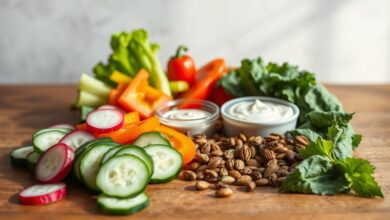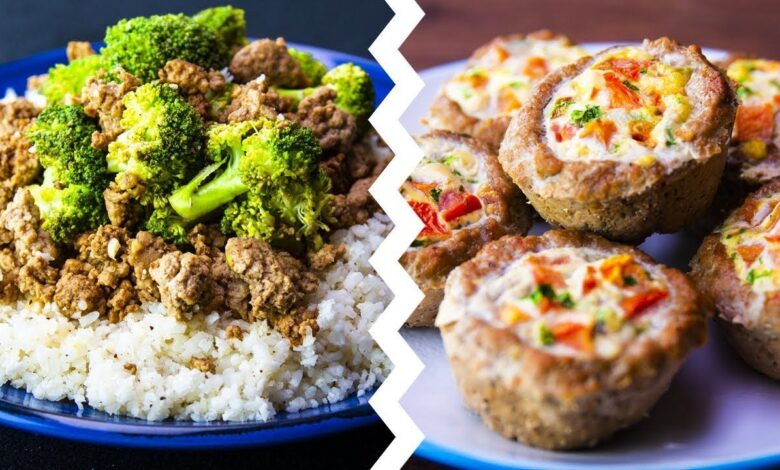
If you’re reading this, chances are you’re looking to streamline your eating habits, lose some weight, and maybe reclaim a bit of time—and sanity—in the kitchen. You’re not alone. We live in a world where convenience often means fast food or processed meals, and yet our bodies are crying out for real nourishment: clean, balanced, purposeful fuel that helps us feel better, perform better, and yes—lose weight. That’s where meal prep comes in. And when you pair meal prep with a low-carb strategy, you get a two-fold advantage: less time cooking during the week, and fewer spikes in blood sugar and cravings.
In this article, you’re going to get five easy low-carb meal prep recipes that are designed specifically for weight loss—but not at the expense of flavor, variety, or practicality. We’ll talk about what low-carb means, how to set yourself up for success, then walk you through each of these five meals with full details, tips, modifications, and how to make them work across Africa, the United States, Europe—or wherever you are. Ready? Let’s dive in.
Read Also 7 Powerful Low-Carb Meal Prep Ideas for Weight Loss Success
What Does “Low-Carb” Really Mean?
When most people hear “low-carb”, thoughts go to the classic diets: keto, Atkins, or maybe paleo. But the truth is, “low-carb” doesn’t mean a rigid “zero‐carb castle” where you’re afraid of bread or potatoes forever. It simply means you’re reducing your carbohydrate intake compared to a standard diet—especially refined carbs—and replacing some of those calories with protein, healthy fats, and fiber-rich veggies.
In practice, many nutrition specialists define a low-carb meal as one where maybe 15-30% of calories come from carbs, or where each serving stays under, say, 30 g of carbohydrates. For meal-prepping purposes, the advantage is two-fold: first, you tend to stabilize blood glucose, which means less “crash” and less craving. Second, because carbs can often pack calories quickly (especially refined ones), reducing them helps with caloric control—key for weight loss.
Another big plus? Many low-carb meals actually naturally include more vegetables, good fats (olive oil, avocado, nuts), and lean protein. That means you’re not just eating less of something—you’re eating better.
And if you live in Ghana, Europe, or the U.S., the concept translates everywhere—yes, you can find local vegetables, lean meats, and healthy fats in Takoradi or Boston or Berlin. So the low-carb strategy is as global as it is personal.
Why Meal Prep Is the Secret Weapon
Let’s be real: most weight-loss plans fail not because they’re wrong, but because life gets in the way. Busy days, kids, work deadlines, surprise travel, social events. So meal prep is like your kitchen insurance policy: you set things up ahead of time so when chaos strikes, you still have a healthy, low-carb meal waiting.
Here’s how meal prep helps:
- Saves time: cooking once, eating multiple times.
- Cuts decision fatigue: you don’t wonder “what will I eat tonight?”
- Keeps you consistent: you’re less likely to grab junk when you’re hungry and empty.
- Helps with portion control: you portion it out in advance so you’re not eyeballing dinner and accidentally overdoing it.
- Enables variety with structure: you prep once, but you can still vary the flavors, proteins, and sides.
When you combine meal prep with low-carb meals designed for weight loss, you build a system that supports your goals every week. Rather than depending on willpower alone, you create a healthy environment. And yes—this matters whether you’re in New York, Accra, London or Cape Town.
How to Choose Ingredients for Low-Carb Meal Prep
Before we jump into the five recipes, let’s talk about the ingredient strategy. Think of your meals like a canvas where you choose three main components: protein, non-starchy vegetables/low-carb base, and flavor/fat. Here’s how to pick smart:
- Protein:
Choose lean or moderate-fat proteins: chicken breast, turkey mince, salmon, eggs, lean beef, tofu (for plant-based). Protein helps you feel full, supports muscle mass (important during weight loss), and slows digestion so you stay satisfied longer. - Low-carb base / veggies:
Replace starchy bases (rice, pasta, potatoes) with lower-carb alternatives: cauliflower rice, zucchini noodles, leafy greens, peppers, broccoli, asparagus, spinach. These are high in fiber and nutrients, low in the carbs that spike insulin. (Food Network) - Flavor + healthy fats:
Fats don’t make you fat (in moderate amounts) — they make meals enjoyable and keep you full. Think olive oil, avocado, nuts, seeds, coconut oil (if appropriate). For flavor you can add herbs, spices, citrus, garlic, ginger. A good low-carb meal isn’t bland—it’s vibrant. - Seasoning & variation:
Use different seasonings so you don’t get bored. Mediterranean herbs one day, West African spice another, Asian-inspired marinade the next. Variety keeps your body and mind engaged.
By prepping 2-3 batches in advance (for 3-4 days each), you free up time and ensure you stay on track. Now, let’s move into those five recipes.
Recipe 1: Grilled Lemon-Herb Chicken with Cauliflower Rice & Steamed Greens
Ingredients (makes 4 portions)
- 4 chicken breasts (skinless)
- Juice of 1 large lemon + zest
- 2 tbsp olive oil
- 2 garlic cloves (minced)
- 1 tbsp fresh chopped parsley or coriander
- 1 tsp dried oregano or mixed herbs
- Salt & pepper to taste
- 1 large head of cauliflower (or 500 g cauliflower rice)
- 1 tbsp coconut oil or olive oil for cooking rice
- 400 g mixed greens (spinach, kale, chard)
- 1 tbsp olive oil + salt for greens
Instructions
- Marinate the chicken – In a bowl mix lemon juice, zest, olive oil, garlic, herbs, salt & pepper. Add the chicken, coat well, cover and refrigerate for at least 30 minutes (or overnight if prepping ahead).
- Cook the chicken – Grill, bake (180 °C/350 °F for approx. 20–25 min) or pan-fry until internal temperature hits ~75 °C and juices run clear.
- Make the cauliflower rice – If using whole cauliflower, chop florets and blitz in a food processor until rice-like. Heat oil in a pan, add “rice”, sauté for 5-7 minutes until slightly tender. Season with salt and pepper.
- Steam or sauté greens – In a separate pan, heat olive oil, add greens, cook until wilted (2-3 minutes), season lightly.
- Portion and refrigerate – Divide chicken, cauliflower rice and greens into four containers. Let cool before closing lids and refrigerating.
Why this works for weight-loss & meal prep
- Chicken gives a good dose of high-quality protein — helps with satiety and supports maintaining lean mass during weight loss.
- Cauliflower rice dramatically cuts carbs relative to regular rice, while still giving a rice-like texture. As noted in healthy recipe guides, cauliflower rice may have just a quarter of the carbs of regular rice. (Food Network)
- Greens add volume, fiber, micronutrients — key for health while cutting calories.
- Keeps well in the fridge for 3-4 days, easy to reheat or eat cold.
- Flexible for global kitchens: you can swap herbs with local spice blends (West African, Mediterranean, etc).
- Low-carb = less insulin spike, more stable energy, fewer post-meal crashes.
Pro tips & variations
- Swap chicken for grilled salmon or tofu (for plant-based) for variety.
- Add a side of avocado slices for healthy fat and extra flavor.
- To make it African-friendly: sprinkle a little suya spice on the chicken or add chopped roasted sweet-plantain (in moderation) if you need more carbs for energy.
- If you like a sauce, make a small batch of yogurt-cucumber-mint (tzatziki style) to add flavor without heavy carbs.
Recipe 2: Turkey & Veggie Lettuce Wraps with Avocado-Mango Salsa
Ingredients (4 portions)
- 500 g lean turkey mince (or ground chicken)
- 1 tbsp olive oil
- 1 onion (finely chopped)
- 2 garlic cloves (minced)
- 1 red bell pepper (diced)
- 1 zucchini (diced)
- 2 tsp ground cumin
- 1 tsp smoked paprika
- Salt & pepper to taste
- 1 large head of butter lettuce or romaine leaves (for wraps)
- Salsa: 1 ripe mango (diced, if available), 1 ripe avocado (diced), juice of 1 lime, handful chopped coriander, salt & chili flakes to taste
Instructions
- Cook the mince & veggies – Heat oil in a large skillet, sauté onion & garlic until fragrant. Add turkey mince, break up and cook until browned. Add bell pepper, zucchini, cumin, paprika, salt & pepper. Continue cooking ~5–7 min until veggies tender and turkey cooked through.
- Prepare the salsa – Combine diced mango, avocado, lime juice, chopped coriander, salt & chlli flakes in a bowl.
- Set up wraps – Wash lettuce leaves, lay them out as “cups”. Spoon turkey-veggie mix into each leaf. Top with avocado-mango salsa.
- Meal-prep portioning – Portion into 4 containers: one container for the turkey-veggie mix, one small container for the salsa and a sealed bag/container with washed lettuce leaves so they stay crisp until you eat.
Why this works
- Lettuce wraps eliminate carb-heavy tortillas or bread — driving down overall carbs while keeping a fun “wrap” format.
- Lean turkey mince provides high protein, aiding fullness and helping your metabolism stay active.
- Veggies add fiber, volume and micro-nutrients.
- The mango-avocado salsa brings flavor, healthy fats (from avocado) and a touch of sweetness that keeps this meal enjoyable—not “diet boring”. That matters for long-term success.
- This recipe is portable, quick, and tailored for meal prep: you can cook the main mix ahead, keep lettuce separate to prevent sogginess, and assemble just before eating.
Pro tips & variations
- If mango isn’t available or is expensive locally, swap for diced pineapple or even chopped tomato + a few raspberries for sweetness.
- Use romaine hearts if butter lettuce is unavailable.
- Make it African-flavored: add a teaspoon of suya spice or peri-peri seasoning into the turkey mix for a West African heat kick.
- Store salsa separately until ready to eat so avocado stays fresher.
Recipe 3: Salmon & Broccoli Sheet-Pan Meal with Lemon-Garlic Butter
Ingredients (4 portions)
- 4 salmon fillets (approx 150–180 g each)
- 500 g broccoli florets
- 1 red onion (cut into wedges)
- 2 tbsp olive oil
- Salt & pepper to taste
- Lemon-garlic butter: 2 tbsp butter (or ghee), 1 garlic clove minced, zest of half lemon, juice of half lemon, chopped parsley
Instructions
- Pre-heat oven to ~200 °C (400 °F). Line a sheet-pan with parchment or lightly greased.
- Prepare veggies & salmon – Toss broccoli florets and onion wedges with olive oil, salt & pepper; spread them on one side of the sheet-pan. Place the salmon fillets on the other side, lightly drizzled with olive oil, salt & pepper.
- Bake for ~12-15 minutes until the salmon is cooked (flakes easily) and broccoli is tender with slightly crisp edges.
- Make lemon-garlic butter – Meanwhile, melt butter or ghee, add minced garlic, lemon zest, lemon juice, chopped parsley. Drizzle this butter over the salmon and veggies when they’re done.
- Portion and store – Divide into 4 meal-prep containers: each with one salmon fillet, broccoli & onions. Store in fridge, reheat when ready.
Why it works
- Salmon is a premium protein source plus rich in omega-3 fatty acids, which support metabolism, heart health and help with inflammation (important when you’re losing weight).
- Broccoli is low-carb but high-in fiber and volume—keeps you full without lots of calories.
- Sheet-pan cooking means one tray, less fuss, easy cleanup—perfect for busy weeks.
- Lemon-garlic butter adds flavor and healthy fat without needing heavy carbs or sauces.
- This meal stays good in the fridge and reheats nicely—great for lunch at work or dinner on the go.
Pro tips & variations
- If salmon is expensive or not locally available, swap for mackerel, tilapia, or even tofu steaks for a vegetarian-friendly twist.
- Change up the veggie side: asparagus, green beans, or Brussels sprouts all work.
- Use local seasonings: maybe a dash of Ghanaian shito, African pepper, or Mediterranean za’atar to vary the profile.
Recipe 4: Egg-Muffin Cups with Spinach & Feta + Side of Zucchini “Pasta”
Ingredients (makes ~8 muffins, 4 portions)
- 8 eggs
- 1 cup (≈ 150 g) chopped fresh spinach
- ½ cup crumbled feta cheese
- 1 red pepper (diced)
- ¼ cup chopped onion
- Salt & pepper to taste
- 2 zucchinis (spiralized) or peeled into ribbons
- 1 tbsp olive oil
- 1 garlic clove minced
- 1 tbsp chopped fresh basil or parsley
Instructions
- Pre-heat oven to ~180 °C (350 °F). Grease a muffin tin (8 or 12 cups).
- Mix egg-muffin batter – In a large bowl beat the eggs, add chopped spinach, diced red pepper, onion, feta, salt & pepper. Stir well.
- Fill muffin tin – Pour the mixture evenly among the muffin cups (about ⅞ full). Bake for ~20-25 minutes, until set and lightly golden. Let cool a few minutes, then remove and portion 2 muffins per person. Store in fridge.
- Prepare zucchini “pasta” – Heat olive oil in a pan, add garlic, sauté ~30 seconds, add zucchini ribbons, toss for 2-3 minutes until just tender but still a little bite. Add fresh basil/parsley, salt & pepper. Portion into 4 servings.
- Meal-prep storage – Each container: 2 egg-muffins + zucchini side. Refrigerate up to 4 days.
Why it works
- Eggs + feta + spinach = high-quality protein + fats + micronutrients. Great for starting a meal strong.
- Zucchini “pasta” keeps things fun and “carb-light” while giving that pasta feel without loads of starch.
- Muffin form means easy grab-and-go breakfast or lunch; reheats easily or eats cold.
- Globally accessible: eggs are near-universal; spinach or local greens can be swapped if needed.
- Supports weight-loss by combining protein (which boosts satiety) and low-carb vegetable sides (which fill volume without heavy calories).
Pro tips & variations
- Add chopped mushrooms or diced cooked bacon to egg muffins for variety.
- Swap zucchini for spaghetti squash (if you have it) or shredded cabbage sautéed lightly.
- For extra crunch, top zucchini side with toasted pumpkin seeds or chopped nuts (in moderation).
- For a Mediterranean twist, use sun-dried tomatoes and olives instead of red pepper.
**Recipe 5: Beef & Vegetable Stir-Fry Bowls with Shirataki Noodles (or Konjac Rice)
Ingredients (4 portions)
- 500 g lean beef strips (sirloin, flank, or local equivalent)
- 2 tbsp soy sauce (or tamari if gluten-free)
- 1 tbsp oyster sauce (optional)
- 1 garlic clove minced
- 1 tbsp ginger minced
- 1 tbsp sesame oil (for flavor)
- 1 red bell pepper (sliced)
- 1 green bell pepper (sliced)
- 150 g snow peas or green beans
- 200 g shirataki noodles (or 500 g frozen konjac rice / cauliflower rice as low-carb base)
- 1 tbsp sesame seeds + chopped spring onions for garnish
Instructions
- Prep beef – In a bowl mix beef strips with 1 tbsp soy sauce, garlic, ginger, sesame oil. Let marinade 10-15 minutes (or more if prepping ahead).
- Cook beef – Heat a large wok or skillet, add beef, stir-fry ~3-4 minutes until just browned. Remove from pan.
- Cook veggies – In the same pan, add bell peppers, snow peas/green beans, stir-fry ~3-4 min until vibrant and crisp-tender. Add remaining soy sauce & oyster sauce, stir well. Return beef to pan, combine.
- Prepare base – If using shirataki noodles, rinse them, boil or sauté briefly. If using konjac rice or cauliflower rice, heat in pan with a little oil until warmed.
- Portion bowls – Divide base among 4 containers, top with beef-vegetable stir-fry. Garnish with sesame seeds and spring onions. Refrigerate.
Why it works
- Beef gives a solid dose of protein and iron—both important for metabolism and energy, especially if you’re more active during weight loss.
- Stir-fry veggies add volume, color, micronutrients—and keep the carbs low since the base is low-carb.
- Using shirataki noodles or konjac rice is a smart hack: you get noodle/rice texture without heavy carbs. The trend of low-carb swaps (like cauliflower rice) is well documented. (Food Network)
- Bowls are meal-prep friendly: you cook one big batch, portion and go.
- Adaptable globally: swap local veggies (okra, African spinach, plantain leaves) or local spices to match regional taste.
Pro tips & variations
- If shirataki/cojac is hard to find locally, use shredded cabbage or thinly sliced zucchini/ribbons as base.
- Swap in chicken, pork, or tofu for variety.
- Add a splash of chili sauce or smoked paprika for extra heat and flavor.
- Add a handful of chopped nuts (cashews, peanuts) for crunch—but keep portion moderated (healthy fats yes, but calories count).
General Meal Prep & Storage Tips
To make your low-carb meal-prep endeavor truly smooth and sustainable, here are some overarching tips that apply regardless of which recipe you’re using:
1. Batch cook on one day
Pick a day (Sunday or your rest day) to do major cooking: marinate proteins, chop veggies, cook bases, portion out containers. Save 1-2 hours and you’ll thank yourself all week.
2. Use good containers
Invest in decent airtight containers (preferably glass with snap lids) so meals stay fresh, reheating is easy, and you’re less likely to toss containers out of convenience.
3. Label & date
Write date on the container or lid so you know when you prepared it. Generally, cooked low-carb meals stay safe 3-4 days in the fridge. After that, freeze or plan to eat quickly.
4. Mix it up
Even if you’re prepping the same base, vary your proteins, spices and sauces each week so you don’t get bored. Boredom is a productivity-killer in diets.
5. Plan for “freezer days”
If you prep 4 days worth but only eat 3, freeze one portion for the following week. It’s great for busy weeks or fallback meals.
6. Re‐heating strategy
Avoid microwaving plastic containers repeatedly; if you can, reheat on stove or oven for better taste and texture. For meal prep, cooling quickly and refrigerating within 2 hours is important.
7. Hydrate & mind portion size
Low-carb doesn’t mean no carbs—ensure you’re still getting some fibrous carbs from veggies, and that you eat enough calories (undereating can stall weight loss). Also hydrate well: sometimes when you think you’re hungry, you’re actually just thirsty.
8. Pair with lifestyle
Meal prep is the foundation, but weight loss works best when paired with good sleep, regular movement (walks, resistance exercise) and stress-management. Think of your low-carb meals as high-quality fuel for an active, engaged life.
Overcoming Common Low-Carb Meal Prep Challenges
Even with the best intentions, many people stumble at common roadblocks. Let’s address and problem-solve them:
Challenge: “I get bored of the same meals.”
Solution: Change seasonings, use different proteins, swap veggies, vary sauces. For example: one week Mediterranean style (olive oil, oregano, parsley), the next week West African (peanut-spice, chili, coriander), next week Asian (soy, ginger, sesame, chili). Also rotating format (bowls, wraps, sheet-pan) helps.
Challenge: “I don’t have time to prep.”
Solution: Even one hour of prep helps. Use shortcuts: buy pre-chopped veggies, use frozen cauliflower rice, cook double portions and freeze half. Also, chop while watching a show or listen to a podcast—make it part of your downtime.
Challenge: “Low‐carb meals feel bland or restrictive.”
Solution: Not on our watch! Use herbs, spices, citrus, garlic, fresh chili, smoked paprika. Add texture with nuts or seeds. Keep the meals fun. Remember: flavor sustains the habit.
Challenge: “I’m in Ghana/West Africa/Europe and local foods differ—can I still do this?”
Solution: Absolutely. Substitute local proteins (tilapia, goat, dark-chicken), local vegetables (okra, African spinach, yam leaves), local spices (ginger, pepper, suya spice). The core principle is the same: lean protein + low‐starch vegetables + healthy fats + flavor. You adapt the palette.
Challenge: “I still crave carbs—rice, bread, pasta.”
Solution: Do not deprive yourself completely. Instead plan for one moderate-carb side per week if you want, or use the strategy of controlled portions. Also, when you eat high-fiber, high-protein meals, the cravings reduce. Cauliflower rice, zucchini ribbons, shirataki noodles—they’re clever swaps. (EatingWell)
Tracking Success: What to Watch
As you implement your low-carb meal-prep plan, keep an eye on meaningful indicators—not just the scale, though that can help. Here are what to monitor:
- Energy levels: Are you less tired mid-afternoon? Are you more consistent?
- Cravings and hunger: Do you feel satiated after meals? Are you reaching for snacks less often?
- Sleep & mood: Poor diet shows up in poor recovery, poor sleep, low mood.
- Body composition: If possible, track waist circumference, how your clothes fit, or a simple photo-log once a week.
- Blood sugar (if relevant): For those with insulin resistance or diabetes, low-carb meals can help stabilize glucose.
- Adherence: Are you actually eating what you prepped? The best plan is the one you’ll follow.
Remember: weight loss is rarely linear. It’s about consistent habits over weeks and months. Meal prep + low-carb gives you a strong foundation.
Recap of the 5 Recipes
- Grilled Lemon-Herb Chicken with Cauliflower Rice & Steamed Greens
- Turkey & Veggie Lettuce Wraps with Avocado-Mango Salsa
- Salmon & Broccoli Sheet-Pan Meal with Lemon-Garlic Butter
- Egg-Muffin Cups with Spinach & Feta + Zucchini “Pasta”
- Beef & Vegetable Stir-Fry Bowls with Shirataki Noodles (or Konjac Rice)
Each one is low in starch, high in protein, rich in flavor, and built for easy prep and reheating. They’re flexible enough for global kitchens, whether you’re in Ghana, the U.S., or Europe. The key is: pick one prep day, cook some of each, portion out, refrigerate or freeze. Then you’ve got your week ready.
Conclusion
So there you have it—a full, practical, flavor-packed guide to 5 easy low-carb meal prep recipes for weight loss. But more than just recipes, this article gives you the strategy: how to choose ingredients, how to prep efficiently, how to make things tasty and sustainable, how to adapt to your location (be it Takoradi, Accra, London, or New York). Because losing weight—and keeping it off—isn’t about the short sprint, it’s about creating habits you can live with.
Remember: the best diet is the one you’ll stick with. Meal prep plus low-carb gives you momentum, consistency, and control. Give these recipes a try this week. Pick one or two that feel easy, cook them up, set aside an hour, portion them out, and you’ll walk into your week with meals waiting, cravings managed, energy high, and your goals front of mind.
Here’s to delicious food, strong habits, and feeling like your best self.
Read Also Master Low-Carb Meal Prep for Weight Loss: Ultimate Guide for Busy Professionals
Frequently Asked Questions
1. Can I still eat some carbs while doing low-carb meal prep?
Yes—“low-carb” doesn’t necessarily mean “no carbs”. You can include moderate amounts of complex carbs (sweet potatoes, quinoa, brown rice) occasionally if your activity level requires it. The key is reducing refined carbs (white bread, sugary snacks, large amounts of rice/pasta) and focusing on vegetables, lean proteins, and healthy fats.
2. How many meals a week should I prep?
It depends on your schedule and fridge/freezer capacity. Many people prep 4-5 days’ worth at once. You could cook Monday for Tuesday–Friday and leave weekend meals more flexible. Or cook two big sessions per week (mid-week refresh). The goal is to minimize daily cooking and decision-making.
3. Is low-carb safe for everyone?
For most healthy adults, yes. But if you have certain health conditions (like ketoacidosis risk, specific metabolic disorders, pregnancy complications) you should consult a medical professional. Also, ensure you’re still getting adequate fibre, vegetables, and variety so you’re not missing key nutrients.
4. What if I travel or don’t have a fridge/oven access?
Good question. Even in hotel stays or travel, you can adapt: use salads with grilled protein, pre-cooked hard-boiled eggs, canned tuna or salmon, pre-washed greens, avocado, nuts. Use microwaves or stove-top if available. Use good portable containers. Even planning for just one low-carb meal per day helps keep your momentum.
5. How long before I see weight-loss results?
It varies—from person to person—but if you’re consistently eating slightly fewer calories than you burn, with good protein, low refined carbs, and exercise, you may see changes in 2-4 weeks (energy, hunger, how clothes fit) and more visible weight/fat loss in 6-8 weeks. The key is consistency, not perfection.

